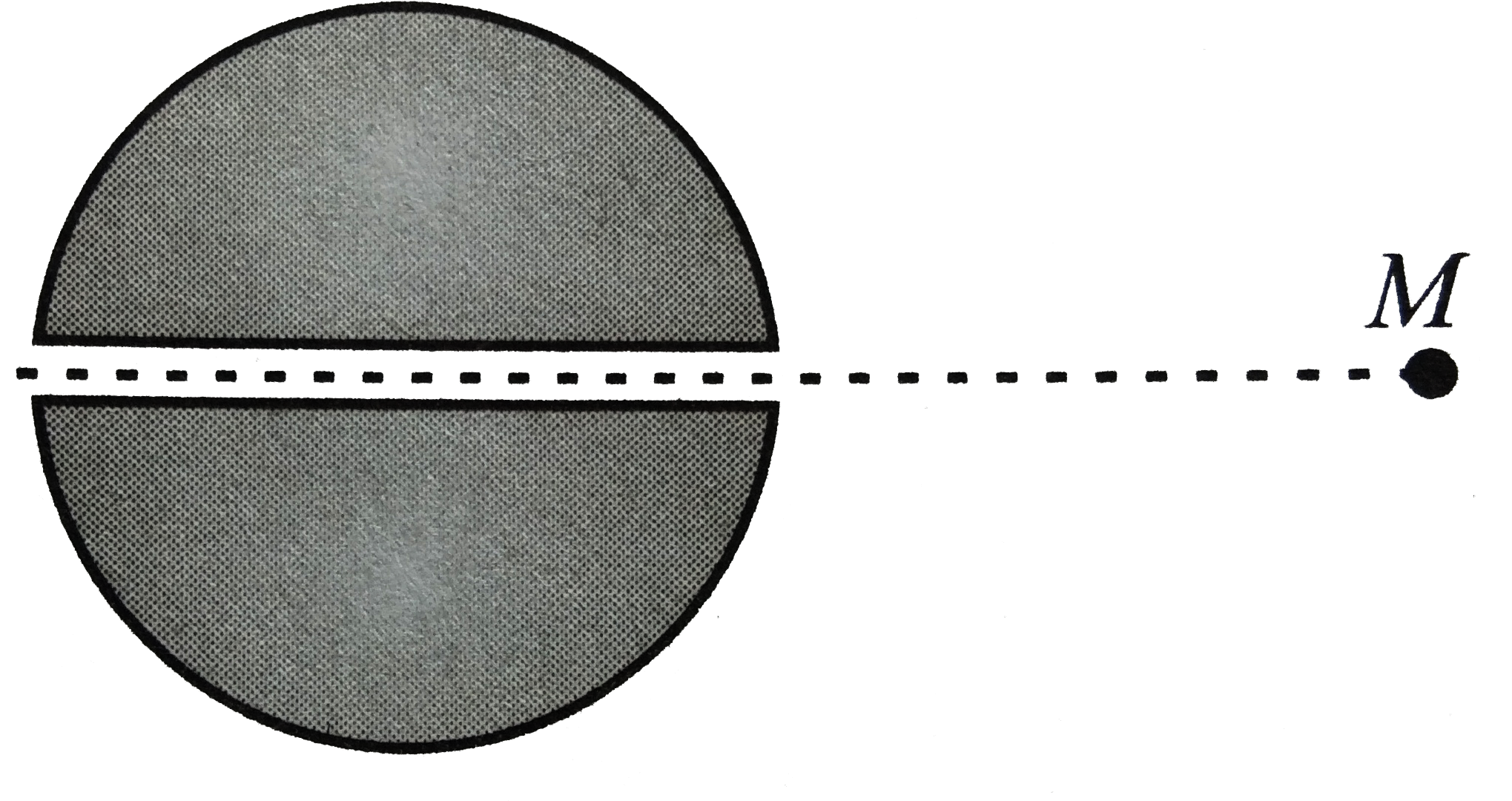
A solid spherical planet of mass 2m and radius 'R' has a very small tunnel along its diameter. A small cosmic
particle of mass m is at a distance 2R from the centre of the planet as shown. Both are initially at rest, and due
to gravitational attraction, both start moving toward each other. After some time, the cosmic particle passes
through the centre of the planet. (Assume the planet and the cosmic particle are isolated from other planets)
4R3
velocity of the cosmic particle at that instant is
√8Gm3R
Total work done by the gravitational force on both the particle is −2Gm2R
Total work done by the gravitational force on both the particle is −2Gm2R

Applying momentum conservation
0=mv1−2mv2
⇒v2=v12 ..(i) Ki+Ui=kf+Uf
0+(−G(2m)2R)m=12mv21+12(2m)v22+(−32G(2m)R)(m) ..(ii)
Solving eqs. (i) and (ii) get
(A) COM will be fixed so
Scm=m1s1+m2s2m1+m2
0=(m)(x)+(2m)(−(2R−x))m+2m⇒x=4R3
(B). Fnet=0⇒a=0
(D). Wgr=U⏐⏐
⏐
⏐
⏐↓⇒Wgr=(−G(2m)2R)m−(−32G(2m)R)m
Topper's Solved these Questions
Similar Questions
A tunnel is dug along a diameter of the earth. Find the force on a particle of mass m placed in the tunnel at a distance x from the centre.
View SolutionA spherical planet far out in space has mass 2M and radius a. A particle of mass m is falling freely near its surface. What will be the acceleration of that particle ?
View Solution
Knowledge Check
A thin spherical shell of mass M and radius R has a small hole. A particle of mass m released at its mouth. Then
Athe particle will execute S.H.M inside the shellBthe particle will oscillate inside the shell, but the oscillations are not simple harmonicCthe particle will not oscillate, but the speed the particle will go on increasingDnone ot theseA particle at a distance r from the centre of a uniform spherical planet of mass M radius R (ltr) has a velocity of magnitude v.
Afor 0<v<√GMr trajectory may be ellipseBfor v =√GMr trajectory may be ellipseCfor √GMr<v<√2GMr trajectory may be ellipse.Dfor v =sqrt((GM)/r trajectory may be circleA solid sphere of mass M and radius R has a spherical cavity of radius R/2 such that the centre of cavity is at a distance R/2 from the centre of the sphere. A point mass m is placed inside the cavity at a distance R/4 from the centre of sphere. The gravitational force on mass m is
A11GMmR2B14GMmR2CGMm2R2DGMmR2
The escape velocity for a planet is ve. A particle starts from rest at a large distance from the planet, reaches the planet only under gravitational attraction, and passes through a smooth tunnel through its centre. Its speed at the centre of the planet will be
View SolutionStatement I: In free space a uniform spherical planet of mass M has a smooth narrow tunnel along its diameter. This planet and another superdense small particle of mass M start approaching towards each other from rest under action of their gravitational forces. When the particle passes through the centre of the planet, sum of kinetic energies of both the bodies is maximum.

Statement II: When the resultant of all forces acting on a particle or a particle like object (initially at rest) is constant in direction, the kinetic energy of the particle keeps on increasing.
View Solution
Two planets of mass M and 16M of radius a and 2a respectively, are at distance 10a. Find minimum speed of a particle of mass m at surface of smaller planet so that it can reached from smaller planet to larger planet.
View SolutionIn free space, two particles of mass m each are initially both at rest at a distance a from each other. They start moving towards each other due to their mutual gravitational attraction. The time after which the distance between them has reduced to a2 is:
View SolutionA spherical planet far out in space has a mass M0 and diameter D0. A particle of mass m falling freely near the surface of this planet will experience an accelertion due to gravity which is equal to
View Solution

